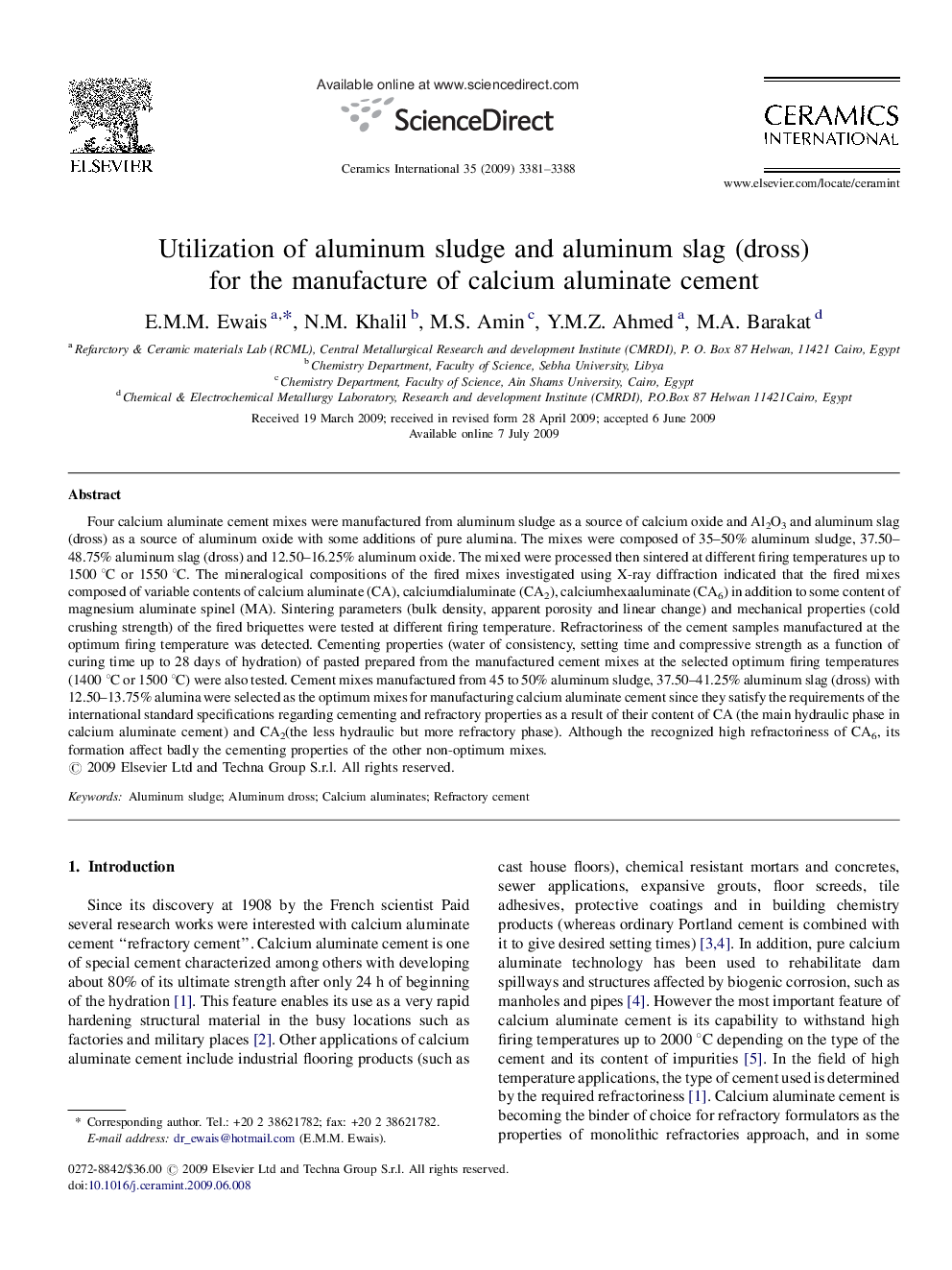| کد مقاله | کد نشریه | سال انتشار | مقاله انگلیسی | نسخه تمام متن |
|---|---|---|---|---|
| 1463331 | 989645 | 2009 | 8 صفحه PDF | دانلود رایگان |

Four calcium aluminate cement mixes were manufactured from aluminum sludge as a source of calcium oxide and Al2O3 and aluminum slag (dross) as a source of aluminum oxide with some additions of pure alumina. The mixes were composed of 35–50% aluminum sludge, 37.50–48.75% aluminum slag (dross) and 12.50–16.25% aluminum oxide. The mixed were processed then sintered at different firing temperatures up to 1500 °C or 1550 °C. The mineralogical compositions of the fired mixes investigated using X-ray diffraction indicated that the fired mixes composed of variable contents of calcium aluminate (CA), calciumdialuminate (CA2), calciumhexaaluminate (CA6) in addition to some content of magnesium aluminate spinel (MA). Sintering parameters (bulk density, apparent porosity and linear change) and mechanical properties (cold crushing strength) of the fired briquettes were tested at different firing temperature. Refractoriness of the cement samples manufactured at the optimum firing temperature was detected. Cementing properties (water of consistency, setting time and compressive strength as a function of curing time up to 28 days of hydration) of pasted prepared from the manufactured cement mixes at the selected optimum firing temperatures (1400 °C or 1500 °C) were also tested. Cement mixes manufactured from 45 to 50% aluminum sludge, 37.50–41.25% aluminum slag (dross) with 12.50–13.75% alumina were selected as the optimum mixes for manufacturing calcium aluminate cement since they satisfy the requirements of the international standard specifications regarding cementing and refractory properties as a result of their content of CA (the main hydraulic phase in calcium aluminate cement) and CA2(the less hydraulic but more refractory phase). Although the recognized high refractoriness of CA6, its formation affect badly the cementing properties of the other non-optimum mixes.
Journal: Ceramics International - Volume 35, Issue 8, December 2009, Pages 3381–3388